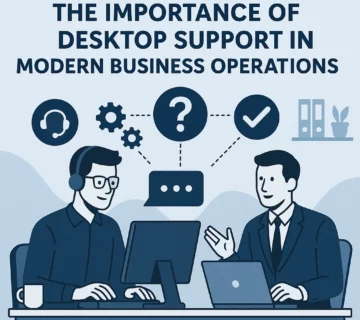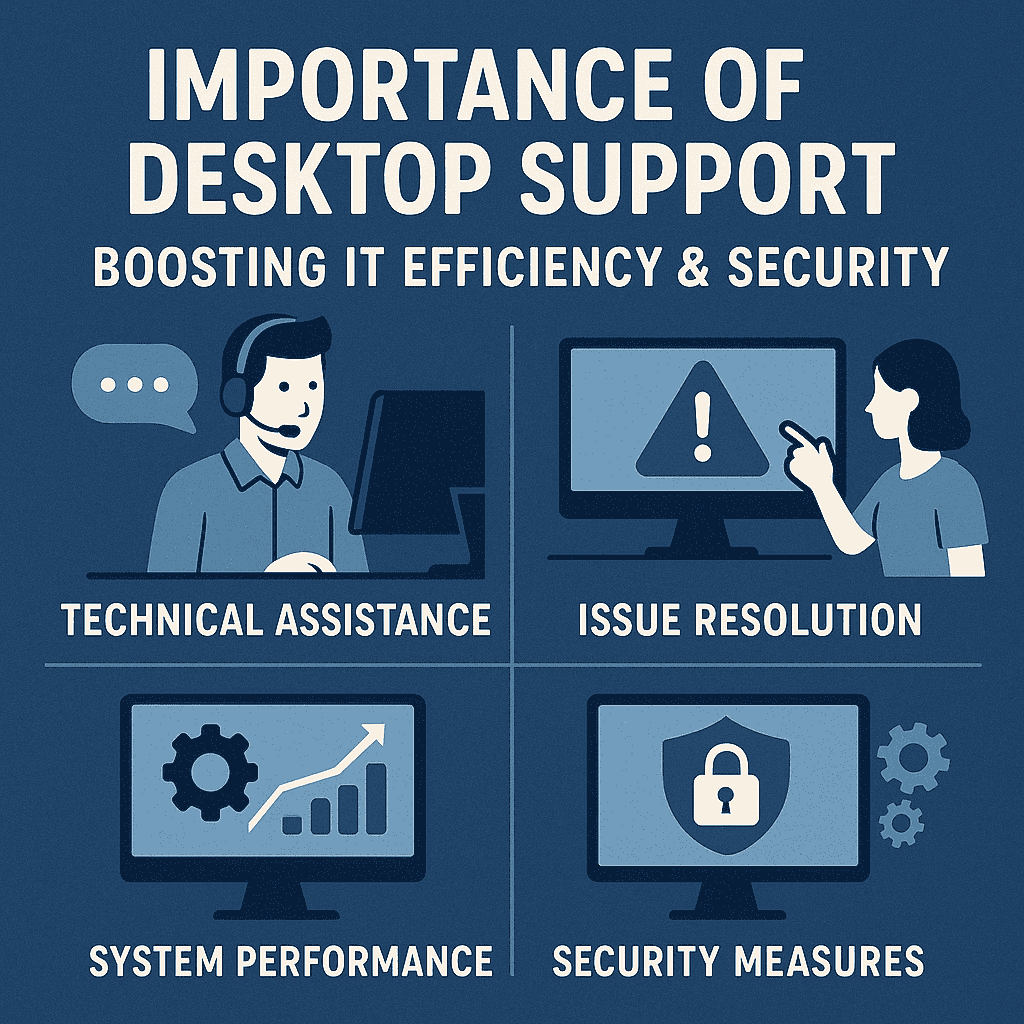Latest Trends in Server Support: Revolutionizing IT Infrastructure
In today’s rapidly evolving IT landscape, server support is no longer just about keeping the lights on—it’s about creating resilient, scalable, and efficient infrastructures that can handle the demands of modern businesses. With the rise of technologies like cloud computing, AI, and automation, server support is undergoing a transformation. Businesses are looking for ways to optimize server performance, ensure security, and minimize downtime.
This blog will explore the latest trends in server support, focusing on innovative solutions that are redefining how companies manage their IT environments.
1. Introduction to Modern Server Support
Server support has always been the backbone of IT operations, but as businesses embrace digital transformation, server management becomes increasingly complex. Traditional on-premises server solutions are making way for cloud, hybrid, and edge-based solutions, all while ensuring minimal downtime, optimal security, and high performance. The role of server support now includes predictive analytics, automation, and advanced security measures.
For businesses, staying updated with the latest trends in server support is essential for maintaining operational efficiency and staying competitive in the market.
2. Cloud-Based Server Solutions
Cloud computing has changed the game for server support. Instead of maintaining physical hardware, businesses can now rent virtual servers from cloud service providers like AWS, Google Cloud, and Microsoft Azure. Cloud-based server support offers several advantages:
- Scalability: Servers can be scaled up or down according to demand.
- Cost Efficiency: Pay only for the resources you use.
- Accessibility: Access from anywhere, making remote work and global collaboration easier.
Many businesses are shifting to cloud-based server solutions to save on infrastructure costs and improve disaster recovery plans. The cloud also enhances backup systems, ensuring data is protected in case of hardware failure.
3. Edge Computing and Server Support
Edge computing is another growing trend in server support. Unlike cloud computing, where data is processed in remote data centers, edge computing processes data closer to the user. This minimizes latency and increases processing speed.
Edge servers are particularly useful for applications requiring real-time data processing, such as IoT devices, autonomous vehicles, and smart cities. With the rise of 5G technology, the demand for edge servers will continue to grow, as they provide faster data transmission and better server performance in critical operations.
4. AI and Machine Learning in Server Monitoring
Artificial Intelligence (AI) and Machine Learning (ML) are transforming server monitoring by predicting potential issues before they escalate. AI algorithms can monitor server activity in real-time, identify patterns, and flag anomalies. This predictive analysis can help prevent server downtime and improve overall efficiency.
AI-based monitoring tools can also automate server optimization tasks, such as resource allocation and load balancing, without human intervention. This reduces the workload for IT teams and ensures servers operate at peak performance.
5. Automation in Server Maintenance
Server automation is a major trend, reducing manual labor and minimizing human error. By automating routine maintenance tasks such as patches, updates, and backups, businesses can:
- Save time: Automated systems handle repetitive tasks faster than manual processes.
- Improve consistency: Automating processes ensures the same standards are applied every time.
- Reduce human error: Automation eliminates mistakes due to human oversight.
Tools like Ansible, Puppet, and Chef are widely used in automating server tasks, making server management more efficient and freeing up IT personnel for more strategic work.
6. Enhanced Security Protocols in Server Management
With the rise of cyberattacks, enhanced security protocols are now a vital component of server support. Businesses are adopting Zero Trust Security Models, which assume no entity, whether inside or outside the network, can be trusted by default. Servers are protected by multi-factor authentication, encryption, and AI-driven threat detection systems.
Data encryption, firewall protection, and proactive security monitoring have become essential in safeguarding critical infrastructure. As cyber threats become more sophisticated, server security must evolve to keep up.
7. The Shift Toward Multi-Cloud Architectures
While many organizations initially adopted single-cloud platforms, the trend is now moving toward multi-cloud environments, where companies use a combination of services from different providers (e.g., AWS, Azure, Google Cloud). This approach reduces reliance on a single provider and allows businesses to leverage the strengths of each platform.
For example, companies may use one provider for storage and another for computing power, optimizing costs and performance.
8. Hybrid Server Solutions
Hybrid server solutions combine the best of both worlds: the security and control of on-premises servers with the scalability and flexibility of cloud servers. Many companies are adopting hybrid solutions to keep sensitive data in-house while using the cloud for less critical applications.
Hybrid server architectures offer more control over data placement and help businesses meet compliance requirements while still benefiting from cloud computing’s advantages.
9. Server Virtualization Technologies
Server virtualization allows businesses to run multiple virtual servers on a single physical server. This technology improves hardware utilization and enables businesses to run different applications in isolated environments on the same hardware.
Popular virtualization tools such as VMware and Hyper-V help organizations reduce hardware costs, improve disaster recovery, and streamline server management.
10. Server Uptime and Disaster Recovery
Maintaining high server uptime is crucial for businesses to ensure continuous operations. Downtime can lead to lost revenue, productivity, and customer trust. Modern server support includes robust disaster recovery plans that ensure systems can be quickly restored in case of a failure.
Advanced monitoring systems, failover solutions, and real-time replication help minimize downtime and keep critical systems running smoothly.
11. Energy Efficiency in Data Centers
With the increasing concern over energy consumption, data centers are focusing on improving energy efficiency. Green server technologies, such as low-power processors and advanced cooling systems, are becoming a priority.
Energy-efficient servers not only help reduce operational costs but also contribute to sustainability goals, making them an attractive option for environmentally conscious businesses.
12. Remote Server Management
With the rise of remote work, the demand for remote server management has surged. IT teams are now able to monitor and manage servers from anywhere, using advanced software tools that allow for:
- Remote monitoring
- Automated alerts
- Remote troubleshooting and maintenance
This has drastically reduced the need for on-site visits and has allowed companies to expand their IT infrastructure without geographic limitations.
13. Zero Trust Security Models in Server Support
A Zero Trust model is now becoming the standard for server security. This approach assumes that all users, devices, and systems are untrusted until proven otherwise.
Server support teams are now implementing Zero Trust principles, which involve strict identity verification, continuous monitoring, and micro-segmentation to protect sensitive data from both internal and external threats.
14. The Role of Server Containers
Containers have revolutionized server deployment by allowing applications to run consistently across different environments. Tools like Docker and Kubernetes are at the forefront of this trend, offering:
- Portability: Applications can be deployed across any server environment.
- Efficiency: Containers use fewer resources than traditional virtual machines.
- Scalability: Containers can be easily scaled up or down depending on demand.
Containers offer a flexible and scalable way to manage modern server infrastructures, particularly in cloud environments.
15. How ECASYS Can Help with Server Support
ECASYS provides cutting-edge server support solutions tailored to meet the unique needs of modern businesses. Our comprehensive services include:
- Cloud and Hybrid Server Management: Expertise in managing multi-cloud and hybrid environments.
- 24/7 Server Monitoring: Continuous monitoring and real-time alerts to ensure uptime.
- Automated Maintenance: Tools to automate updates, patches, and backups, reducing manual errors.
- AI-Powered Predictive Analytics: Leverage AI to detect potential issues before they cause downtime.
- Robust Security Solutions: Advanced protection through Zero Trust models and AI-driven security protocols.
- Remote Support: Full-service remote management and support to ensure seamless operation.
Whether you’re transitioning to the cloud, improving server security, or optimizing for performance, ECASYS can help streamline your server management.
FAQs on ECASYS Services
Q1. What makes ECASYS stand out in server support?
ECASYS offers a combination of AI-powered tools, 24/7 monitoring, and automated maintenance that ensures your servers are always performing optimally with minimal downtime.
Q2. Can ECASYS manage multi-cloud environments?
Yes, ECASYS specializes in multi-cloud and hybrid server management, helping businesses optimize performance across various cloud platforms.
Q3. How does ECASYS ensure server security?
We use advanced security protocols, including Zero Trust models and AI-driven threat detection, to protect your servers from cyber threats.
Q4. Does ECASYS offer remote server management?
Yes, we provide comprehensive remote server management services, allowing businesses to manage and monitor servers from anywhere.
Q5. Can ECASYS help with disaster recovery?
Absolutely. Our disaster recovery solutions ensure quick server restoration and minimal downtime in the event of a failure.
Q6. How do I get started with ECASYS server support?
You can get started by contacting us directly through our website, where our team will assess your needs and create a customized server support plan for your business.





No comment